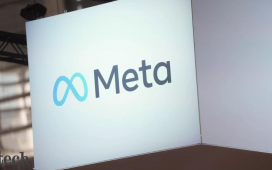The global microelectronics industry is undergoing massive changes. Semiconductor manufacturing, largely done abroad, is threatened by political instability that could derail current global supply chains. In response, companies are increasing semiconductor production in the U.S.
Semiconductor technology is also close to approaching the limits of Moore’s Law, which states that chips double in computing power every two years while costs are cut in half. This has left those in the semiconductor field to explore new types of technology.

Fulton Professor of Microelectronics Krishnendu Chakrabarty leads Arizona State University’s contributions to the Center for Heterogeneous Integration of Micro Electronic Systems, or CHIMES, a research center comprised of 14 universities and funded by the Semiconductor Research Corporation and the Defense Advanced Research Projects Agency. Photo courtesy L N/Unsplash
Download Full Image
In response to such large changes in the semiconductor industry, the Semiconductor Research Corporation, or SRC, formed the Joint University Microelectronics Program, or JUMP, 2.0. The coalition is a public-private partnership made up of universities, industry partners and the Defense Advanced Research Projects Agency, or DARPA.
According to DARPA, JUMP 2.0 consists of research centers focusing on a variety of technical challenges relevant to semiconductors. One of these research centers is the Center for Heterogeneous Integration of Micro Electronic Systems, or CHIMES, led by Penn State. Fourteen university partners, including Arizona State University, will collaborate through the center to advance future microelectronics capabilities.
“Phenomenal growth requires new and transformative logic, memory and interconnect technologies to overcome the inevitable slowdown of traditional dimensional scaling of semiconductors,” says CHIMES Director Madhavan Swaminathan, head of electrical engineering and William E. Leonhard Endowed Chair in Penn State College of Engineering’s School of Electrical Engineering and Computer Science, in a news release.
Jumping microelectronics into the future
Ira A. Fulton Schools of Engineering Fulton Professor of Microelectronics Krishnendu Chakrabarty leads ASU’s contributions to the center, which is conducting efforts in electrical testing and security.
Chakrabarty’s research will focus on test and security functions in 3D integration, which involves connecting semiconductor devices together vertically, and heterogeneous integration, which combines semiconductors manufactured in different locations together into one device. These methods are used in the field of microelectronics packaging, which refers to how semiconductor devices are connected for use in consumer products and encased for protection and heat dissipation.
“Heterogeneous and 3D integration are key enabling technologies for next-generation electronics packaging and critical to re-establishing U.S. technology dominance in semiconductor manufacturing,” Chakrabarty says. “As we develop new packaging such as 3D and heterogeneous technologies, manufacturing defects are likely to occur, and these can introduce significant limitations on production numbers and product quality.”
The CHIMES research team intends to boost the reliability of these increasingly complicated computing devices. In turn, this will improve the efficiency of manufacturing semiconductor chips by reducing the amount of unusable, defective chips.
As devices become more complex, testing them for proper function is more of a challenge. Chakrabarty and his collaborators will focus on adding built-in test capabilities to 3D and heterogeneous integrated devices to overcome this problem.
These capabilities would detect a malfunction inside the devices without external troubleshooting and probing different spots to find the source.
To alleviate security concerns, the CHIMES researchers will investigate ways to prevent leakage of stolen intellectual property to adversaries and deter hardware Trojans. A hardware Trojan is physical sabotage from an adversary that causes a computer chip to malfunction.
How ASU CHIMES in to help
As a prominent researcher in the areas of electrical testing and security, Chakrabarty was invited to join CHIMES by Swaminathan.
“I am the principal investigator on multiple projects funded by DARPA, the National Science Foundation and the SRC’s Global Research Collaboration program on these topics,” Chakrabarty says. “My prior work on testing 3D integrated circuits has been adopted by multiple semiconductor companies.”
Chakrabarty considers ASU to be a valuable contributor to CHIMES thanks to the large presence of microelectronics in Arizona’s economy.
Industry partners in the center include Intel, which has managed large-scale manufacturing and office operations in the Phoenix area for decades, and Taiwan Semiconductor Manufacturing Company, which is opening two large manufacturing plants in Arizona with a $40 billion investment.
IBM is also involved in CHIMES, and Chakrabarty says that the center will explore opportunities to collaborate with other companies involved in other JUMP 2.0 centers, such as Boeing and Micron Technology.
Opportunities for students will include collaborations with industry liaisons, mentoring, internships at partner companies and access to additional resources such as semiconductor tools and designs.
Despite the grand plans already in motion, the work at CHIMES is just beginning.
“My goal is to make CHIMES sustainable beyond the five years awarded by SRC, especially since the technologies we’re developing will intersect applications 10 years from now,” Swaminathan says in the Penn State news release. “Not only will we develop future heterogeneous integration technologies, but we will also educate the engineers and scientists of tomorrow.”










